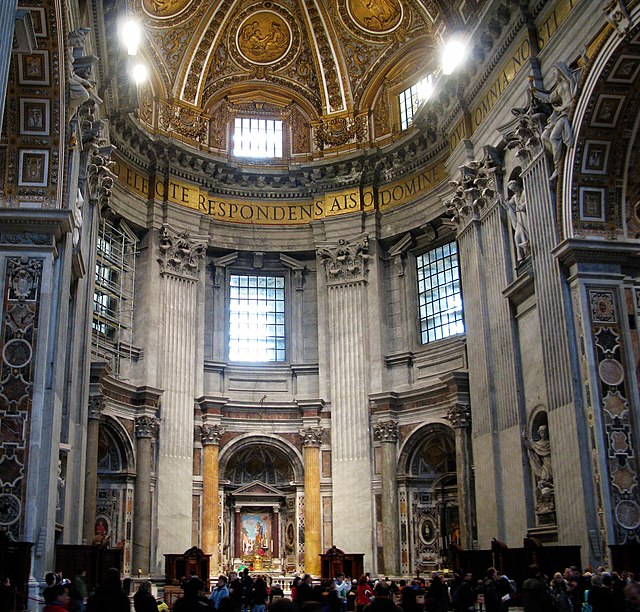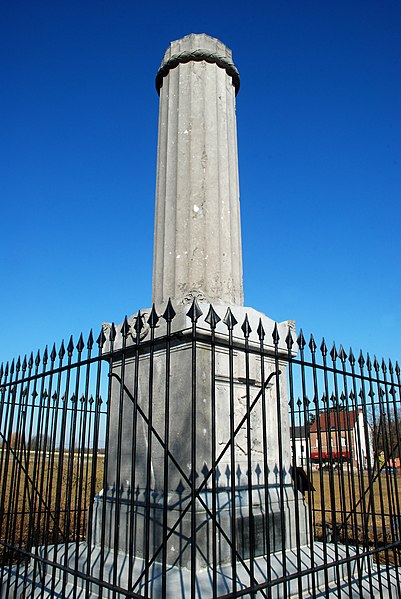Fluting in architecture and the decorative arts consists of shallow grooves running along a surface. The term typically refers to the curved grooves (flutes) running vertically on a column shaft or a pilaster, but is not restricted to those two applications. If the hollowing out of material meets in a point, the point is called an arris. If the raised ridge between two flutes appears flat, the ridge is a fillet.
Concave fluting on Doric order columns; Northington Grange, a Greek Revival building of 1804-1817
St Peter's Basilica, Rome, with cable-fluted pilasters and fluted columns
Very untypical spiral fluted columns in the Great Colonnade at Apamea in Syria
Convex-fluted engaged columns at Djoser's funerary complex in Saqqara, Egypt. Before 2600 BC.
A column or pillar in architecture and structural engineering is a structural element that transmits, through compression, the weight of the structure above to other structural elements below. In other words, a column is a compression member. The term column applies especially to a large round support with a capital and a base or pedestal, which is made of stone, or appearing to be so. A small wooden or metal support is typically called a post. Supports with a rectangular or other non-round section are usually called piers.
National Capitol Columns at the United States National Arboretum in Washington, D.C.
Columns of the Parliament House in Helsinki, Finland
Column of the Gordon Monument in Waterloo.
Dragon pillar from the Yingzao Fashi, Song dynasty








